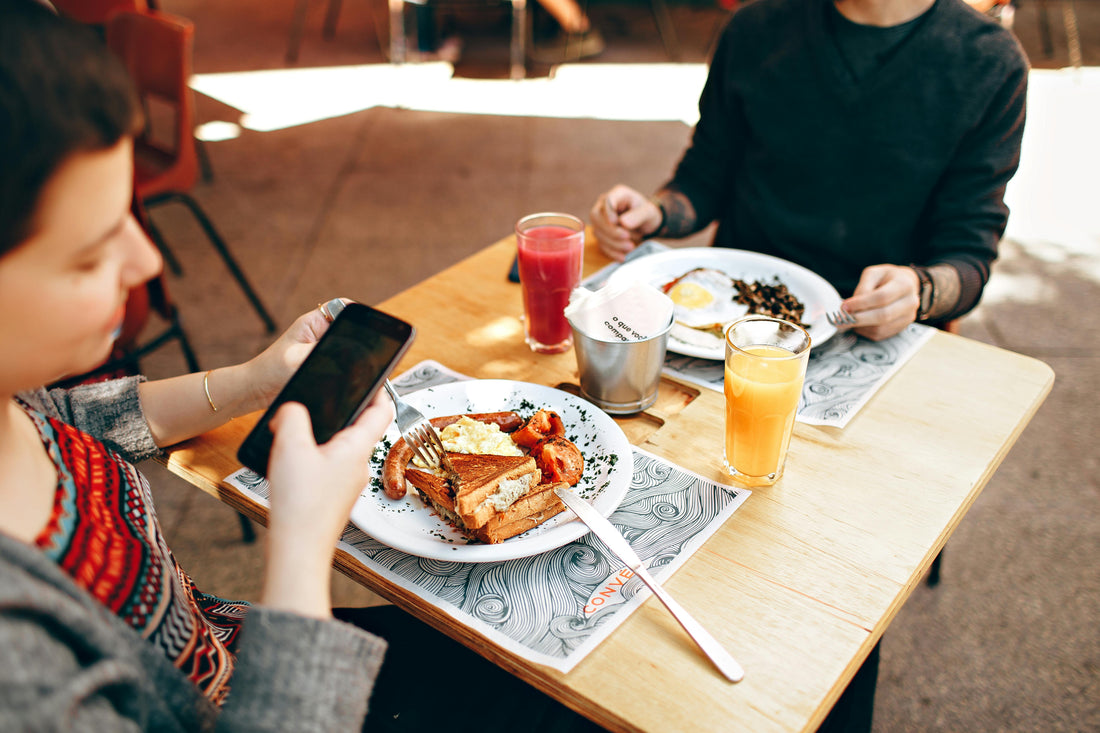
How Eating Speed Affect How Much You Eat
Share
Have you ever noticed that sometimes you eat a big meal and still feel hungry later, but other times, a smaller meal feels satisfying? A new study from Wageningen University looked at exactly why that happens. It turns out, how fast you eat and how dense your food is in calories can make a big difference in how much you eat overall.
What Is Energy Density?
Energy density means how many calories are packed into a certain amount of food. For example, 100 grams of chocolate will have more calories than 100 grams of carrots. Foods that are high in fat and sugar usually have higher energy density.
In the study, sandwiches with low energy density (1.9 kcal per gram) were compared to sandwiches with high energy density (3.8 kcal per gram). The results were clear: when people ate lower energy-dense sandwiches, they consumed fewer calories — even if the portion size was similar.
What Is Eating Rate?
Eating rate is simply how fast you eat. It’s measured in grams or calories per minute. Some foods force you to slow down because they take longer to chew — like raw carrots or crusty bread. Others are easy to eat quickly, like soft bread or creamy spreads.
The study tested meals that encouraged slow eating and others that were easier to eat fast. On average, people ate less when the food was harder to chew and took longer to finish.
What the Study Found
Researchers gave 69 adults five different types of lunch sandwiches made from mostly ultra-processed ingredients. They changed the texture and ingredients to control how fast the food was eaten and how calorie-dense it was. Here’s what they found:
- People ate 50% fewer calories when the meal was both low in energy density and slow to eat, compared to a fast-eating, high-calorie meal.
- Compared to a typical lunch, slowing down eating and reducing energy density led to a 59% drop in calorie intake.
- Meals that were easy to eat quickly and were high in calories led to 19% more calorie intake than normal.
Why Does This Matter?
The study suggests that two simple things — eating more slowly and choosing foods that are less calorie-dense — can help reduce how much you eat. And the best part? Participants didn’t feel hungrier afterward, even though they ate less.
This means it’s possible to cut calories without feeling deprived.
Practical Tips You Can Use
Here are a few easy changes you can make based on this study:
- Slow down your meals. Put your fork down between bites, chew thoroughly, and take smaller bites.
- Add crunchy or chewy foods. Raw vegetables, whole fruits, and firm whole grains slow down your eating naturally.
- Choose lower energy-dense foods. Foods with more water or fiber — like salads, soups, fruits, and veggies — help you feel full on fewer calories.
- Watch out for soft, processed foods. They’re easy to eat quickly and often pack more calories into every bite.
Final Thoughts
This study shows that it’s not just what we eat, but how we eat that matters. Slowing down and choosing lower-calorie-dense foods can help us naturally eat less without relying on willpower. It’s a simple and practical strategy for anyone trying to manage their weight or improve their eating habits.
